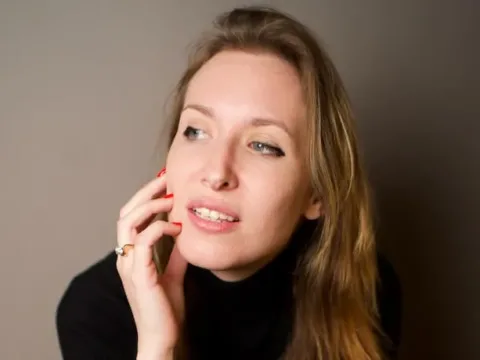 Resounding Earth was commissioned by the University of Notre Dame’s DeBartolo Performing Arts Center for their first permanent resident ensemble: Third Coast Percussion. Most readers will need little introduction to either Third Coast Percussion or Augusta Read Thomas, so suffice to say that this recording brings together one of Chicago – and America’s – most important living composers, with one of its most exciting emerging ensembles.
Resounding Earth was commissioned by the University of Notre Dame’s DeBartolo Performing Arts Center for their first permanent resident ensemble: Third Coast Percussion. Most readers will need little introduction to either Third Coast Percussion or Augusta Read Thomas, so suffice to say that this recording brings together one of Chicago – and America’s – most important living composers, with one of its most exciting emerging ensembles.

For most composers, a piece such Resounding Earth – with some 300 bells and other pieces of metal from around the world – would smell rather heavily of a gimmick, but Augusta Read Thomas’ “signature sound” in her orchestral music has always been connected to her love of resonance and, in particular, her use of the metallic percussion instruments such as crotales, vibraphones and glockenspiel. In a lecture to the University of Chicago’s Franke Institute, Thomas goes so far as to say: “…bells have been central to my music for 30 years. These certain attack-sustain-decay envelopes that I’ve been writing. Whether I’m writing them for chorus, for piano, for large orchestra, for chamber ensemble – are very central to what I’ve been doing.”
There’s a sense, then, in which Resounding Earth is a natural and organic outgrowth of Thomas’ established interests. You might think that thirty-five minutes of non-stop resonance would be a rather one-sided affair, but Thomas is a master of colour and though she herself has spoken about the difficulties of writing a piece with no strings, brass, voices, skins or drums of any kind, there is a still a very distinct progression in the piece which travels through dramatic tension and release.
There are four movements in the work, and each one is dedicated to two or three masters of the past century. They are:
- Invocation – Pulse Radiance (Homage to Oliver Messiaen and Igor Stravinsky)
- Prayer – Star Dust Orbits (Homage to Luciano Berio and Pierre Boulez)
- Mantra – Ceremonial Time Shapes (Homage to Lou Harrison and György Ligeti)
- Reverie Carillon – Crystal Lattice (Homage to Edgard Varese, Harry Partch, and John Cage)
Augusta Read Thomas is a composer who understands that there are more to bell-sounds than the familiar decay, and the first movement begins with a quasi-groove that stretches across ten Indian Noah Bells and a variety of metal pipes and other small table-top metals. There is a certain harmonic tension that develops over the course of this movement between the microtonal nature of the ‘world’ percussion and more ‘western’ instruments such as the vibraphone and glockenspiel. I’m not entirely convinced that this tension is solved within the movement, but it is clearly and purposefully contrasted against the extreme unity of Movement II, in which the four percussionists gather together around a table of twenty-six Japanese Rin and 2-4 crotales each.
If the first movement is very much about “attack”, this is a movement that manages to explore the “sustain” element of the bells. The result is a sense of the eternal, as the Rin as struck and stirred in a way where one simultaneously never seems to hear the end of any pitch, while still feeling a constant sense of movement. A composer should sometimes be lauded as much for what they manage to avoid doing, and I think it should be notated that this extraordinary sound world is created without the clichéd sound of the bowed crotale.
 As you might expect, then, the third movement takes up the idea of decay. Fifteen minutes into a piece with four percussionists and nothing but metal, it is amazing how fresh and exciting Thomas has managed to make this movement’s opening gesture: a single unison strike of four Burma bells. At this point, it starts to register that Resounding Earth is a piece that is somewhat unsatisfying in audio alone. In audio alone, one is constantly left wondering exactly which instrument is being played to make this or that extraordinary sound.
As you might expect, then, the third movement takes up the idea of decay. Fifteen minutes into a piece with four percussionists and nothing but metal, it is amazing how fresh and exciting Thomas has managed to make this movement’s opening gesture: a single unison strike of four Burma bells. At this point, it starts to register that Resounding Earth is a piece that is somewhat unsatisfying in audio alone. In audio alone, one is constantly left wondering exactly which instrument is being played to make this or that extraordinary sound.
One wants to see as well as hear the spinning Burma Bells, and in this the DVD should really be your first port of call for experiencing and exploring this music. Beautifully filmed at Notre Dame’s DeBartolo Performing Arts Centre, this is music that really is lifted by seeing these four virtuoso percussionists navigating a set-up that is visually as rich as its sound world.
The final movement brings together all that we’ve been hearing in the preceding movements. The percussionists move freely between the three ‘stations’ that were established in the opening movements of the piece, and the work grows to where each percussionist is released into an improvised “four-way solo” across the entire range of instruments. Each picks up a tubular chime and walks to the center of the stage for a single, final, unison chime.
























